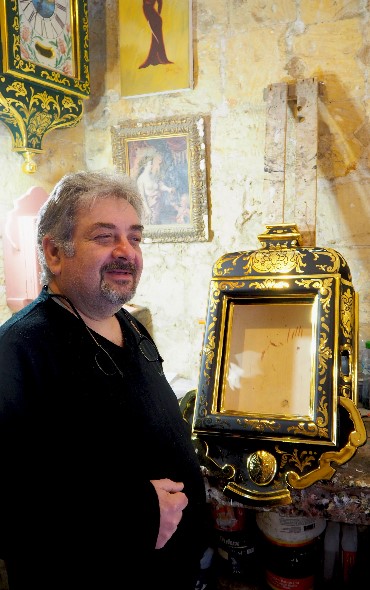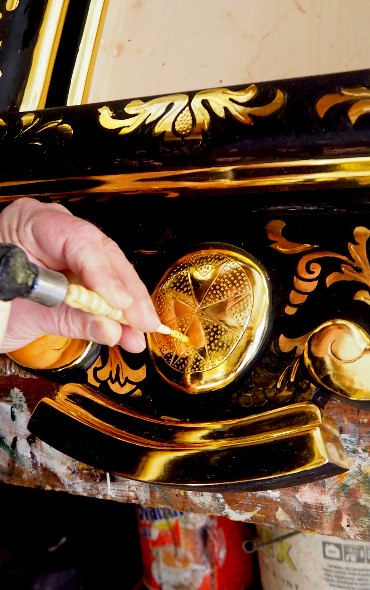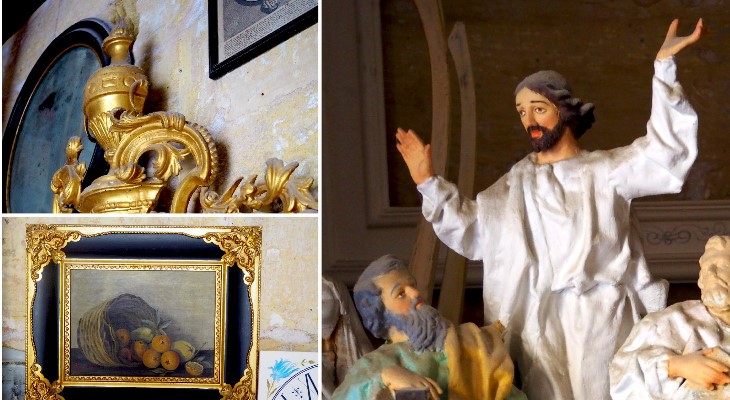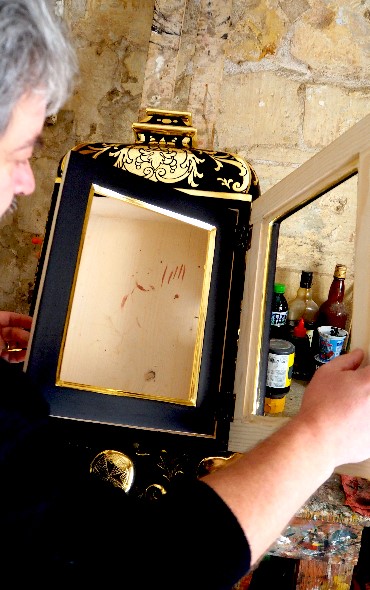Sixth generation craftsman Pierre Darmanin at Ditta Darmanin has been gilding for 39 years.

Lisa Borain
"I'm in love with this craft. If I wasn't, I would close down. It wouldn't be worth my while," says Pierre Darmanin of his craft of gilding and restoring, which has been in his family since 1793.
The craft is a rare one, with only a few who have spent decades painstakingly learning its secrets taught by a dedicated mentor. "It's a very delicate art. The right person has to give you the right answers. There are so many details that you learn with experience. You use glue, but how much glue? Then there's the environment. Too much humidity is bad, but too much aridity isn't good either. It's not like a recipe where you can measure things. You have to feel it.

Lisa Borain
"Today, you can control things (such as conditioning the air) which you couldn't before, but it's essential to learn the old way first to truly know the craft."
While Pierre and his family are originally from The Three Cities, they have always had their workshops in Valletta. His predecessors would travel to Valletta from the south each day by boat.
"This is where everyone was. You have to imagine how St Christopher's Street was in the 18th century. It was lined with the sunken workshops of carpenters and gilders offering their services. The street used to be called it-triq tas-siggijiet, which means 'chair street'. It was then blasted in the war, and when it was rebuilt, its character changed completely."
Pierre focuses mainly on building Maltese clocks from scratch, as well as painting, gilding, and the restoration of church articles, mirrors and frames.

Lisa Borain
The demand is high. The prolific gilder is already booked up for the year ahead, and some churches will have to wait until the following year to get their status restored for the nearing summer festas.
It usually takes roughly 19 days to build a clock, give or take, depending on particular intricacies. Malta is the only country in the world that produces clocks precisely like these.

Lisa Borain
"It came about from the Knights of St John. In the beginning, the clock was just an adorned box. The specific Maltese clock began when a knight requested a special design with a more adorned shape. Then, in the 19th century, noble and wealthy people began to give one to their daughters as part of a dowry. There are four main colours; the black was for the knights, the blue for nobility, red was for clergy, and green for wealthy businessmen."
What's the best part of this vocation? "When you're up high in a church restoring a piece of art. You're up there, touching art where others don't go. That's something really special."
Will the craft carry on from here? "My daughter is an archaeologist, but I have taught her everything about gilding. We'll see what happens there!"